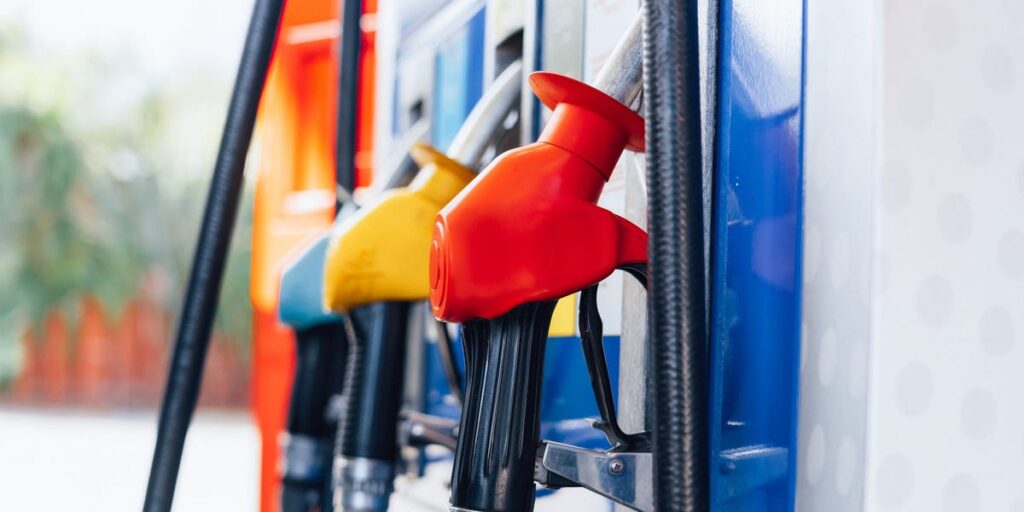- Florida gas stations are running out of fuel ahead of Hurricane Milton’s landfall.
- If the storm damages Port Tampa Bay, it could mean long-term trouble for the gas supply chain.
- A supply chain expert told BI government assistance may be required now to avoid catastrophe.
A day before Hurricane Milton was expected to make landfall, gas stations in Florida were already running out of fuel.
As of 8 p.m. local time on Tuesday, more than 1 out of 5 gas stations in Florida had no gas, according to data from GasBuddy, which tracks gas prices.
The shortage comes as millions of people try to flee Florida in anticipation of Milton, leading to long lines at gas stations and traffic jams. The hurricane is expected to hit Florida’s Gulf Coast on Wednesday or Thursday and pass through the state’s central area, including Tampa Bay and Orlando.
Shon Hiatt, director of the Business of Energy Transition Initiative at the University of Southern California’s Marshall School, told Business Insider that gas is distributed to Central Florida through Port Tampa Bay — and having just one major source of fuel complicates efforts to get gas to people who need it.
“In this case, Florida is extremely vulnerable because they don’t have any other pipelines, so it’s almost like an island,” Hiatt said.
In a Tuesday press conference, Florida Gov. Ron DeSantis said that the state’s reserves include 110,000 gallons of gasoline and 268,000 gallons of diesel fuel, with trucks on the way to refill diminished reserves in areas in the storm’s path, CNN reported.
“There is no fuel shortage,” CNN reported DeSantis said. “Fuel continues to arrive to the state of Florida. But lines at gas stations have been long and gas stations are running out quicker than they otherwise would.”
Christopher Tang, a UCLA professor and scholar of supply chain management, told BI that the problem is compounded by the sheer number of people filling up their tanks, as the fuel supply cannot keep up with demand.
Tang said gas tankers on roads could also be stuck in traffic jams, which would require government coordination to address before the situation becomes too dire.
“If it’s very serious, then the National Guard may need to help out to deliver some of the gas,” Tang said.
All the experts who spoke to Business Insider said if there is lasting damage to the port, it could impact access to gas in Central Florida for weeks — if not months — after the hurricane. Hiatt said the state could get gas in other ways, besides the port’s pipeline, via truck or rail, but that it would likely result in inflated fuel prices.
“But again, it’s all about the infrastructure. So are the railroads clear? Is the debris gone? That’s to be determined,” Hiatt said. “Everyone’s saying this could be this a hundred-year event where it could be the worst since the 1840s, when a massive hurricane hit and completely changed the geography of Tampa.”
Patrick DeHaan, an analyst for GasBuddy, echoed Tang and Hiatt’s concerns, adding that people facing empty gas stations are getting increasingly desperate for fuel — which would be compounded if the port is damaged in the storm.
“It would be hugely problematic if there was significant damage to the port,” DeHaan told Business Insider. “And that’s what we’re kind of waiting to see. Will it be extensive damage? Will the Coast Guard be able to open the port again? Will the shipments of gasoline be able to go into the port? Because if the port’s down for a decent amount of time, even more than a few days, it’s going to be significantly problematic.”
Read the full article here


